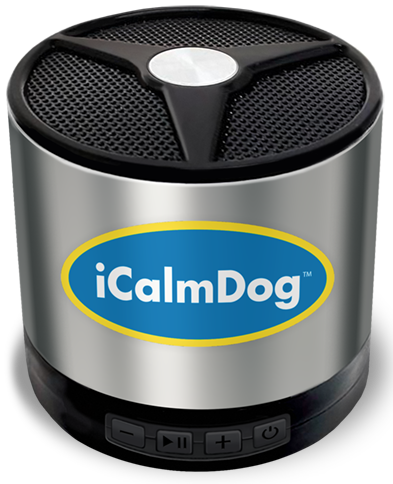Most of us go through life, listening to whatever music suits us, without giving a thought to our four-legged co-pilot who is obliged to listen too; even while we sing at the top of our lungs (poor dogs).
Have you ever stopped and wondered if your dog may not like your choice in music? Or, better still, that there may be music out there that would calm him down, and even make training easier?
Over the years, researchers have done just that. And, thanks to them, we know have the answers to these questions, which could change your dog’s life (for the better) and may even help you with training.

Lisa Spector is co-founder of Through a Dog’s Ear, an animal music program created by BARD (BioAcoustic Research & Development) to provide audio programs specifically for the health, well-being and longevity of animals.
Spector’s credentials include being a graduate of Juilliard and an award-winning concert pianist. In addition, she is a canine music expert, agility enthusiast and a former puppy raiser for Guide Dogs for the Blind. While developing their music, Spector and her co-founder Joshua Leeds, consulted with veterinarians, animal behaviorists and trainers.
Currently, Spector runs a shelter program, “Music in Shelters,” where she donated CDs of herself piano that are now being played in over 1,500 shelters worldwide. She told iHeartDogs.com:
“The donated music is helping increase adoption rates in over 1,500 shelters worldwide for several reasons. One is that it helps keeps dogs quiet. The peaceful environment encourages visitors to stay longer and then adoption rates increase. It’s also sent home with dogs with behavioral challenges. Trainers often work with new adoptees – using the music to ensure their new home is their forever home.”
Watch the below video of her CD in action at the Sante Fe Animal Shelter:
We interviewed Spector to learn more about music for dogs and its applications for pet parents.
What made you get involved in music for dogs?
LS: I’ve always been a dog lover, and in 2003 I was a volunteer puppy raiser for Guide Dogs for the Blind. Professionally, I was performing as a concert pianist and owned a music school. As a teacher, I went to a seminar taught by sound researcher Joshua Leeds and learned about the principles of psychoacoustics – the study of how sound and music affects the human nervous system. I learned how to calm and focus a class of 4-year-olds in 30 seconds flat with the right prescription of music. I also noticed that this same music had a profound effect at calming my rambunctious Guide Dog pup. I went back to Joshua and asked if he’d ever considered creating music for our beloved 4-legged friends.
We then discovered that a little bit of research had been done on the topic by Irish behaviorist Deborah Wells. But, there was much more to be done. A veterinary neurologist took interest in our idea and ran a clinical research testing over 150 dogs with four hours of classical music we had recorded, including the slowed down, simplified psychoacoustic arrangements we had created. In summary:
- In the kennel environment, over 70 percent of the dogs became calmer with the simplified, 50-60 beats per minute (bpm) — both solo piano and trio music.
- In the home environment, the solo piano at 50-60 bpm showed an average of 85 percent becoming calm, and over half the dogs went to sleep.
This lead to the launch of our first recording in 2008 by Through a Dog’s Ear… Music to Calm Your Canine Companion Vol. 1. It includes the slowed down simplified classical arrangements discussed here.

Can you explain Dr. Alfred Tomatis’s research, which you also used while developing your music?
LS: Dr. Alfred Tomatis (1920-2001) was an internationally known ear, nose, and throat doctor, and inventor. His alternative medicine theories of hearing and listening are known as the Tomatis Method. His work is used in neurodevelopment clinics world-wide for the treatment of autism, dyslexia, ADD, ADHD, etc.
He believed that sound is a nutrient; we can either ‘charge’ or ‘discharge’ the nervous system with sound. Tomatis-inspired techniques – using high or low tones, fast or slow tempos, and easily identified patterns – informs the recordings of Through a Dog’s (and Cat’s) Ear.
What makes the music for dogs different from other music?
LS: We make three changes to classical music:
- Slowed down tempos to 50 to 60 (bpm) beats per minute
- Lowered frequencies that calm the canine nervous system
- Simplified patterns that take listeners from active listening to passive hearing
We use piano as it’s a solo instrument that easily includes low frequencies that help calm the canine nervous system.
In summary, through the use of tone, tempo, and pattern identification, we are able to speed up or slow down primary pulse systems of the mammalian body (rain waves, heart rate, and breath). This is especially useful for canine and feline anxiety reduction.
Anything you stay away from (noises dog’s don’t like)?
LS: We stay away from high frequency ranges that charge or excite the canine nervous system.
Do you think there are other uses for music for dogs other than calming and separation anxiety? For example they say classical music helps people study…do you think having music on while training a dog could help them focus?
LS: In our original testing, we actually tested music designed for mind alert/ body relaxed (for humans). We had thought that would be most effective in the training environment. However, trainers tell us over and over that the simplified psychoacoustic arrangements are so effective at helping dogs focus. And then training is so much easier. They love to play it during classes, because calm gets transferred down the other end of the leash and it also calms the people as well. That is particularly helpful in a classroom with reactive dogs, since dogs pick up our energy so quickly.
The iCalmDog
When I worked at a doggy daycare, I saw firsthand the affect of music on dogs. It was interesting to see a room of 30-40 barking crazy dogs get quiet when the rock, rap, even pop music was switched to a CD similar to Through A Dog’s Ears.
So, now that you are completely convinced that your dog needs calming music in his life (and you should be!), you maybe wondering how you can take that music with you on the road, for say, training at a park? Or maybe at the vet’s office (another place of high anxiety)?

Through a Dog’s Ear just launched their new iCalmDog 2.0, which is a portable music device for your dog!

People enjoy their music on their mobile devices,” says Spector, “Now, there is a way for Buster to carry his clinically tested calming canine tunes with him to the vet, groomer, dog sitter, etc. People are telling us that their dogs are so happy to have their own iPawd.”
Where to Find Music For Dogs
There are several canine sound therapy programs created for different listening situations. You find them all on the Through A Dog’s Ear website.
